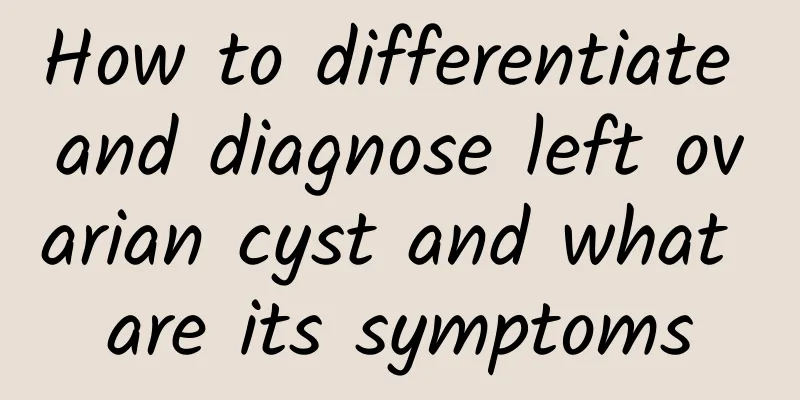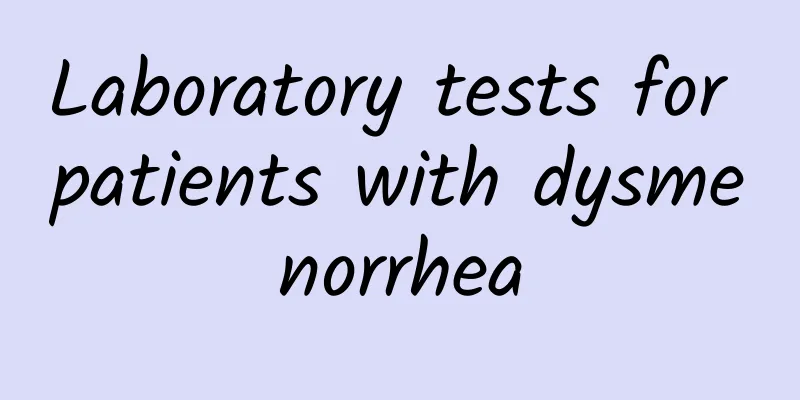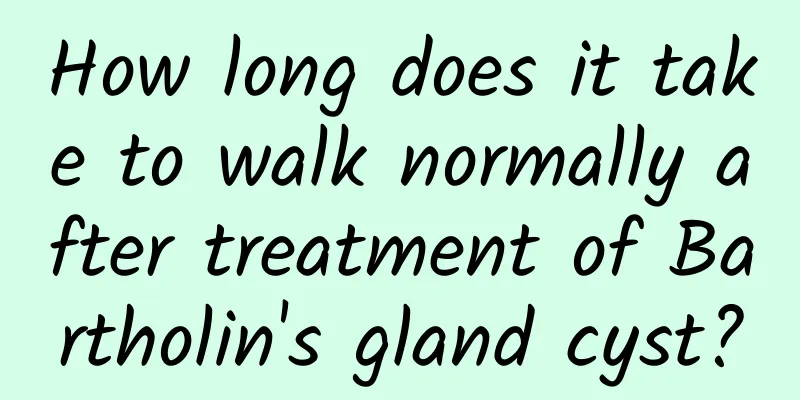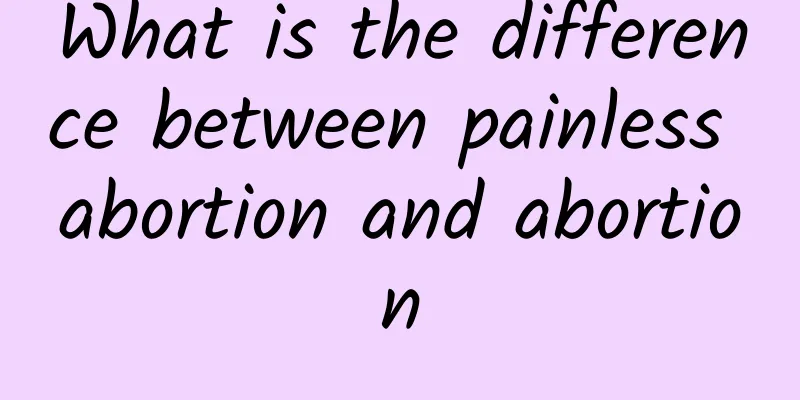How to differentiate and diagnose left ovarian cyst and what are its symptoms

|
Ovarian cyst is a relatively complicated disease in medicine. Because there are many causes, the symptoms are also different. So how to differentiate and diagnose left ovarian cyst? What are the symptoms? The left ovarian cyst is an ovarian tumor. The mortality rate of ovarian malignant tumors is relatively high, ranking first among gynecological tumors. Therefore, once it is confirmed to be a left ovarian cyst, it needs to be paid attention to. The symptoms of left ovarian cyst are as follows: 1. Discomfort in the lower abdomen: This is the initial symptom before the patient feels a mass in the lower abdomen. Due to the weight of the tumor itself and the influence of intestinal peristalsis and changes in body position, the tumor moves in the pelvic cavity, pulling on its pedicle and pelvic infundibulum ligament, causing the patient to have a feeling of distension and heaviness in the lower abdomen or iliac fossa. 2. Increased abdominal circumference and abdominal swelling: This is the most common complaint. Patients notice the enlargement of their abdomen when they realize that their clothes or belts seem tight, or they feel it occasionally in the morning, so they press their abdomen and find swelling in the abdomen and abdominal distension and discomfort. 3. Menstrual disorders: Generally, ovarian or even bilateral ovarian cysts do not cause menstrual disorders because they do not destroy all normal ovarian tissues. Some uterine bleeding is not endocrine or is caused by ovarian tumors that change the pelvic blood vessel distribution and cause endometrial congestion; or it is caused by ovarian malignant tumors directly metastasizing to the endometrium. Menstrual disorders caused by endocrine tumors are often combined with other secretory influences. 4. Infertility: The cause of infertility caused by ovarian cysts has yet to be determined. 5. Abdominal pain: If the tumor has no complications, there is very little pain. Malignant cysts often cause abdominal pain and leg pain, and the pain often causes patients to seek emergency treatment. 6. Compression symptoms: Huge ovarian tumors can cause dyspnea and palpitations due to compression of the diaphragm. Ovarian tumors combined with a large amount of ascites can also cause this symptom; but some ovarian tumor patients' dyspnea is caused by unilateral or bilateral pleural effusion; and it is often combined with ascites to form the so-called Meigs syndrome. |
<<: Do birth control pills cause menstrual irregularities?
Recommend
Specific clinical symptoms of cervicitis
Cervicitis is a gynecological disease that many w...
Why do I get vulvar leukoplakia in late pregnancy? What should I do if I have vaginitis in late pregnancy?
Pregnancy is a very special and important stage i...
What are the precautions after medical abortion?
After medical abortion, you should pay attention ...
What to do if you want a natural abortion
Miscarriage is a very sensitive and complex topic...
Medical treatments for menopause
We all know that if a woman suffers from menopaus...
How big is a physiological ovarian cyst? Are the symptoms serious?
How big is a physiological ovarian cyst? Are the ...
Can exercise treat cervical hypertrophy?
Cervical hypertrophy can be improved with the hel...
Will vaginal candidal infection affect pregnancy?
Will candidal vaginitis affect pregnancy? Gynecol...
Original flavor ≠ no flavor! 3 common myths about yogurt
The weather is hot in the summer, and people are ...
Brief introduction to the care methods of pelvic inflammatory disease
Usually, we should pay attention to the signs of ...
How to treat acute Bartholinitis
Acute Bartholinitis usually requires medication, ...
What are the treatments for chronic adnexitis?
What are the treatments for chronic adnexitis? Wo...
What is the best food for irregular menstruation?
Women have menstruation every month, but some wom...
Watching action movies can easily make you fat. Nutritionists use two tricks to solve the problem.
Do you like watching movies? A few days ago, neti...
Some nursing tips for pelvic inflammatory disease surgery
After pelvic inflammatory disease surgery, it is ...









